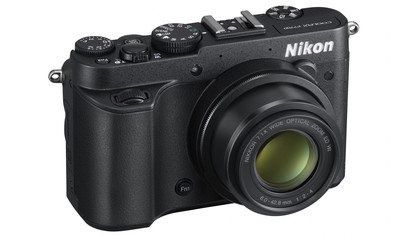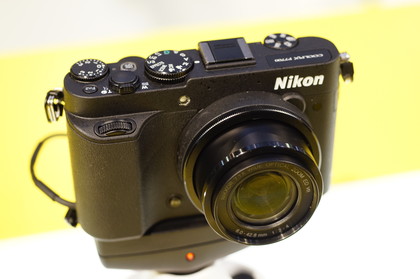Why you can trust TechRadar
Initial indications, and the specs list of the Nikon P7700, were very promising, and we're pleased to say that images from the camera are very good. Colour rendition is good, with images appearing bright, sharp and punchy without being overly vibrant.
Canon's G series of cameras - such as the Canon PowerShot G15 and Canon G1 X - have been dominant in this sector of the market for quite some time, so it's nice to see Nikon introducing something that is a lot more capable of competing than previous iterations of the P series.
Autofocus acquisition is reasonably quick in the majority of cases, and is also accurate. You can move the focus to a specific focus, or let the camera do that for you. There's also the option to choose between normal autofocus, close-range focusing and macro-close up.

Switching to macro mode when you want to photograph an object extremely close is a good idea, with autofocus able to perform from only a couple of centimetres away.
This gives the camera the edge over cameras such as the Canon G1 X, which although packing a much large sensor needs around 20cm to focus, making it very difficult to use for close-up work.
Even at low sensitivity settings, there is some evidence of image smoothing when examining the images at 100%, but given the size of the sensor this isn't a surprise. It's certainly not something that will affect image quality at standard web and print sizing.

Edge to edge sharpness is generally very good, while you can also implement some creative effects thanks to the f/2.0 maximum aperture of the lens. Out of focus areas are rendered well, with a pleasing drop-off in sharpness.
Sign up for breaking news, reviews, opinion, top tech deals, and more.
Noise is controlled well at low sensitivity settings, but at higher sensitivities, such as ISO 800 and ISO 1600, image quality starts to deteriorate. Luckily, the f/2.0 lens means that these sensitivities can perhaps be avoided, but if you're forced to bump up the ISO, be prepared for a less than perfect performance.
Still, if you only want to keep images small, either printing-wise or for displaying online, they should be fine.

Nikon has included a number of digital filters that can be implemented on shots. While it's perhaps true that they won't appeal to the vast majority of consumers that Nikon is aiming this camera at, the filters aren't the best we've seen, and are easily beaten by offerings from other manufacturers such as Panasonic and Sony.
Still, it's nice to have something to play with, and some of the filters are customisable. Unfortunately, you can't shoot in raw format when using the effects, so if you decide later down the line that you don't like the filter on a particular image, you're stuck with it.
Matrix (sometimes known as evaluative or general) metering on the Nikon P7700 works well, providing good exposures in the majority of cases. If you are shooting something with mixed or difficult lighting, you can switch metering modes to something more appropriate, via the menu, relatively quickly.

Automatic white balance does a good job of judging the scene to provide accurate colours, even in mixed or artificial lighting. If you find that the camera can't quite cope, white balance can be changed via one of the mode dials at the top of the camera, so it's easy to make adjustments.
One of the biggest niggles we have with this camera is its shot-to-shot time. Despite having a fast processor, it's a very slow process, sometimes needing two or three seconds before it's ready again. Needless to say, this can be very frustrating, especially when trying to shoot more than one photo of a subject in reasonably quick succession.
The Nikon P7700's screen, which is not only fully articulated, but also high resolution at 921k dots, is great to use, and seems to work well in mixed lighting conditions. We've been unable to test it in bright sunshine, but in general outdoor conditions, glare hasn't been an issue.
Few will mourn the loss of the viewfinder that appeared on previous versions of the P series, especially given how good the screen is to use to compose images.
Current page: Performance
Prev Page Build quality and handling Next Page Image quality and resolution
Amy has been writing about cameras, photography and associated tech since 2009. Amy was once part of the photography testing team for Future Publishing working across TechRadar, Digital Camera, PhotoPlus, N Photo and Photography Week. For her photography, she has won awards and has been exhibited. She often partakes in unusual projects - including one intense year where she used a different camera every single day. Amy is currently the Features Editor at Amateur Photographer magazine, and in her increasingly little spare time works across a number of high-profile publications including Wired, Stuff, Digital Camera World, Expert Reviews, and just a little off-tangent, PetsRadar.
